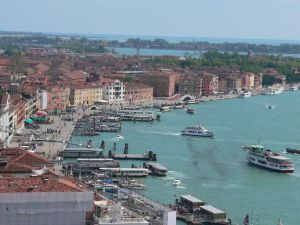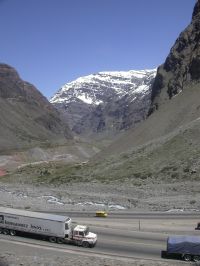3 Great Public Transit Options for Travellers
Many travellers who arrive in a foreign destination without a vehicle head straight to the rental car counter at the airport. While that can be the best strategy in some situations–if you’re visiting a largely rural place, for instance–I’d argue that in many cases, you’re better off taking public transit. Depending on the place, it’s usually cheaper, faster and more fun. Plus, you get the added benefit of meeting locals, who aren’t likely to jump in your rental car unless you’re a contestant on The Amazing Race.
The following list is by no means exhaustive. It just highlights a few of the fun public transit experiences I’ve had in the last few years.
1. Swiss trains
Not surprisingly in a country famed for its watches, Swiss trains run largely on time. Well, at least they do in comparison to North American trains; last year, news reports that “only” 94 percent of Swiss trains ran on time had the country in a tizzy (oh, that Amtrak had such worries).
I was surprised, however, at how extensive the Swiss train network is. In international airports, train service comes right into the terminal. Out in the countryside, even small mountain towns like Lauterbrunnen, where I stayed, have great connections. (And in places where trains just can’t get through, there’s a good bus network.)
For visitors, the icing on the cake may be the luggage transport service. You can check your bag at an airport in North America and pick it up at one of 60 train stations across the country. On the way home, leave your bag at the train station and kiss it goodbye until it rolls off the carousel at the airport back home. Very, very civilized.
Want to see for yourself? You can buy a Swiss rail pass before leaving home.
2. Venetian vaporetti
By all means, take a gondola ride. You’ll kick yourself all the way home if you don’t splurge on this classic tourist experience. But gondola rides are usually leisurely round trips to nowhere. For practical trips, hop on a vaporetto–the Venetian version of a public bus.
In the photo, you can see a vaporetto stop at the very bottom of the picture, at middle right: two rectangular buildings with white roofs, at the end of a short dock.
You won’t be alone on the vaporetto; water taxis are extortionately expensive, so many tourists travel like locals. One bit of advice: pack light. Huge suitcases (especially runaway ones on wheels) won’t make you a lot of new Venetian friends, particularly during rush hour. If nothing else, don’t forget to take off bulky backpacks and put them on the floor (a good piece of advice when travelling on any form of public transit anywhere, come to think of it).
Check the Venice Connected website for passes and fares, and read more about the vaporetto system at Europe for Visitors.
3. The bus from Santiago to Buenos Aires

This trip isn’t for the faint of heart. Especially on the Chilean side, the road across the Andes consists of a series of steep switchbacks, with not a guardrail in sight. (See the photo for a glimpse of the view from the bus window.) And there have been accidents–not on our trip, luckily. Instead, my husband and I had the weird pleasure of watching a Thai martial arts movie dubbed into Spanish on the overhead TV screens, while surrounded by a team of teenage Argentinean water polo players cheering madly.
The kids were a blast, actually; we ended up practising our second languages on each other for much of the trip. And once we switched buses in Mendoza, we were treated to at-seat meal service (complete with wine). In the morning, we awoke to the sunrise over Argentinean ranch country.
If we had been better organized, we could have booked berths on the overnight bus from Mendoza to Buenos Aires, but even our coach seats were spacious and comfortable. And the price for the 21-hour trip? About US$55 for each of us.
For information on buses travelling east, see the Santiago bus terminal website (Spanish only). If you’d like to do the trip in the opposite direction, Omni Lineas has an English-language page.























